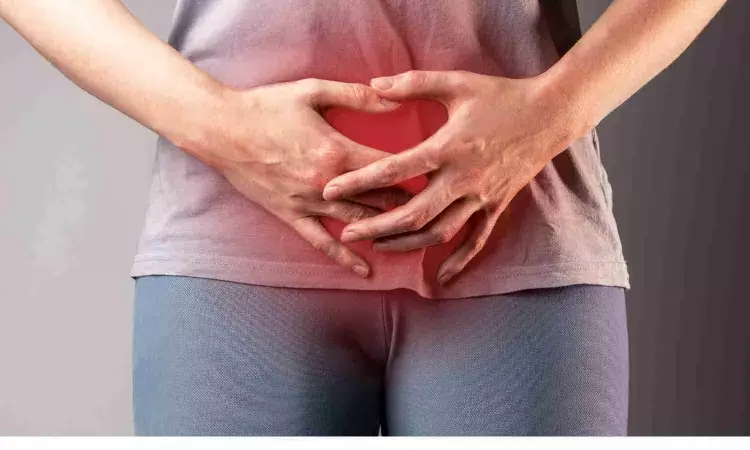- Home
- Medical news & Guidelines
- Anesthesiology
- Cardiology and CTVS
- Critical Care
- Dentistry
- Dermatology
- Diabetes and Endocrinology
- ENT
- Gastroenterology
- Medicine
- Nephrology
- Neurology
- Obstretics-Gynaecology
- Oncology
- Ophthalmology
- Orthopaedics
- Pediatrics-Neonatology
- Psychiatry
- Pulmonology
- Radiology
- Surgery
- Urology
- Laboratory Medicine
- Diet
- Nursing
- Paramedical
- Physiotherapy
- Health news
- Fact Check
- Bone Health Fact Check
- Brain Health Fact Check
- Cancer Related Fact Check
- Child Care Fact Check
- Dental and oral health fact check
- Diabetes and metabolic health fact check
- Diet and Nutrition Fact Check
- Eye and ENT Care Fact Check
- Fitness fact check
- Gut health fact check
- Heart health fact check
- Kidney health fact check
- Medical education fact check
- Men's health fact check
- Respiratory fact check
- Skin and hair care fact check
- Vaccine and Immunization fact check
- Women's health fact check
- AYUSH
- State News
- Andaman and Nicobar Islands
- Andhra Pradesh
- Arunachal Pradesh
- Assam
- Bihar
- Chandigarh
- Chattisgarh
- Dadra and Nagar Haveli
- Daman and Diu
- Delhi
- Goa
- Gujarat
- Haryana
- Himachal Pradesh
- Jammu & Kashmir
- Jharkhand
- Karnataka
- Kerala
- Ladakh
- Lakshadweep
- Madhya Pradesh
- Maharashtra
- Manipur
- Meghalaya
- Mizoram
- Nagaland
- Odisha
- Puducherry
- Punjab
- Rajasthan
- Sikkim
- Tamil Nadu
- Telangana
- Tripura
- Uttar Pradesh
- Uttrakhand
- West Bengal
- Medical Education
- Industry
Acupuncture Plus Rehab Therapy Promising for Post-Stroke Urinary Incontinence: Meta-Analysis

China: A recent systematic review and meta-analysis published in Frontiers in Neurology highlights the potential of acupuncture therapy (AT) combined with rehabilitation therapy (RT) in improving outcomes for patients experiencing urinary incontinence following a stroke.
Research revealed that the combination of acupuncture therapy and rehabilitation therapy proves more effective than either approach alone in enhancing clinical outcomes and bladder function in patients with post-stroke urinary incontinence.
Post-stroke urinary incontinence (PSUI) significantly impacts patients’ quality of life and recovery trajectory. With growing interest in non-pharmacological interventions, this study aimed to comprehensively evaluate whether combining acupuncture with standard rehabilitation offers a superior approach compared to either therapy alone.
Zifeng Dai, First Teaching Hospital of Tianjin University of Traditional Chinese Medicine, Tianjin, China, and colleagues extensively searched eight electronic databases, identifying 36 randomized controlled trials that met the inclusion criteria. These studies, encompassing 2,796 participants, assessed the impact of integrating AT with RT in treating PSUI.
The analysis revealed the following findings:
- Patients receiving acupuncture therapy (AT) combined with rehabilitation therapy (RT) had significantly better outcomes compared to those treated with either RT or AT alone.
- The overall treatment success rate was higher in the combined therapy group, with a Risk Ratio of 1.23.
- Bladder function showed notable improvement in the combination group, including increased maximum bladder capacity and enhanced urinary flow rate.
- There was a significant rise in average urine output per void in patients receiving the combined therapy.
- Pelvic floor muscle strength improved across different muscle fiber types in the AT plus RT group.
- The therapy effectively reduced residual urine volume and maximal detrusor pressure.
- A notable decline was observed in the frequency of urination and urinary incontinence episodes over 24 hours.
- Patient-reported outcomes supported these findings, with lower symptom severity reflected in better ICIQ-SF scores.
- Quality-of-life improvements were seen, especially in I-QOL scores, though changes in the NIH Stroke Scale and Barthel Index scores did not reach statistical significance.
Despite these encouraging findings, the researchers caution that the current body of evidence has its limitations. Many of the included studies varied in methodological quality, and most were conducted within a single cultural context, which may affect generalizability. The authors emphasize the need for more high-quality, multicenter randomized trials to confirm the benefits of AT combined with RT and explore its effectiveness across diverse patient populations.
“The findings of the meta-analysis indicate that incorporating acupuncture into rehabilitation strategies may provide additional clinical benefits for patients with post-stroke urinary incontinence,” the researchers concluded. They further noted that this combined approach not only enhances bladder function and alleviates symptoms but also improves patient-reported quality of life, making it a promising adjunctive therapy in post-stroke recovery care.
Reference:
Dai, Z., Wang, Y., Du, Y., Hou, L., Li, Y., Ma, K., Yan, Q., Wen, J., Dong, X., Chen, X., & Zhang, L. (2025). Efficacy of acupuncture therapy plus related rehabilitation therapy for post-stroke urinary incontinence: A systematic review and meta-analysis. Frontiers in Neurology, 16, 1575970. https://doi.org/10.3389/fneur.2025.1575970
Dr Kamal Kant Kohli-MBBS, DTCD- a chest specialist with more than 30 years of practice and a flair for writing clinical articles, Dr Kamal Kant Kohli joined Medical Dialogues as a Chief Editor of Medical News. Besides writing articles, as an editor, he proofreads and verifies all the medical content published on Medical Dialogues including those coming from journals, studies,medical conferences,guidelines etc. Email: drkohli@medicaldialogues.in. Contact no. 011-43720751


